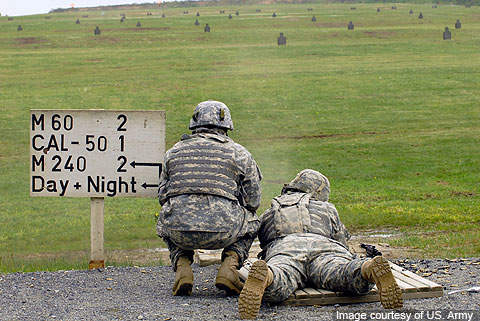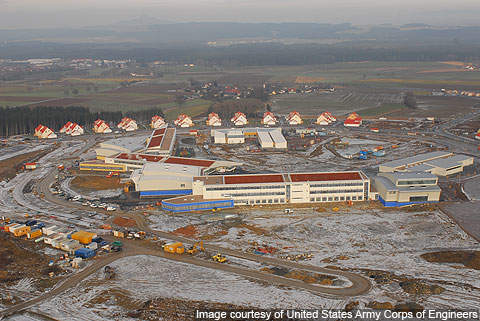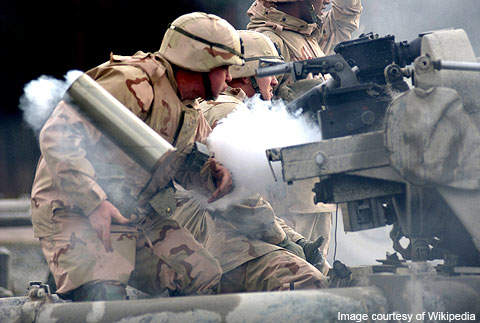The Grafenwoehr training area is a major US Army installation spread over 223km² in the Neustadt Waldnaab district in the town of Grafenwohr, Bavaria, Germany. The base, which celebrated its 100th anniversary on 30 June 2010, is one of the largest military communities in Europe, with a population of over 6,000.
The base has Grafenwöhr main post in the north, Vilseck military community in the south and the training area in the middle. The 7th Army Joint Multinational Training Command provides training through advanced facilities such as simulators. The base also provides training for military equipment operations such as tanks.
A $1bn expansion was completed in May 2010, one of the largest army construction projects in Europe since the 1950s.
Grafenwoehr training area history
The Grafenwoehr training area is the largest NATO training area in Europe. Established for the Royal Bavarian Army in 1907, the first artillery round was fired at the base on 30 June 1910. The base trained troops for the two World Wars and the Cold War.
Design and construction
The Efficient Basing-Grafenwoehr (EBG) initiative was initiated by the US Army Europe (USAREUR), formerly the 7th Army, and involved the relocation of USAREUR command and control HQ and six battalion units, including Schweinfurt, Kaiserslautern, Bamberg and Wiesbaden, to a consolidated complex in East Camp Grafenwoehr. The EBG provides operational readiness and operational control through the consolidation of troops in a single installation.
Work on the EBG started in 2000 and was completed on schedule by May 2010. The initiative was managed by the US Army Corps of Engineers Europe District, which included the Grafenwoehr Army Garrison and Bauämter.
The EBG involved the construction, renovation, alteration and infrastructural measurements of 150 projects and buildings. The initiative increased the capacity of the bases from 1,000 personnel to about 4,500, along with 8,500 family members.
Grafenwoehr garrison facilities
Grafenwoehr is the headquarters of the 7th Army JMTC, which is the largest training command outside the US. With facilities such as simulation centres, classrooms and other training resources, the base offers training to the US Army, NATO installations, Joint Service, allied units and service component forces and leaders. The 7th JMTC is the subordinate command under the USAREUR and is responsible for training within US Army Europe. It also handles administration, planning and command operations.
The tenants of the base are the Seventh United States Army JMTC, 3747th MFTB, 7th Weather Squadron, 18th CSSB, 12th Chemical Company, 535th Engineer Company, 709th Military Police Battalion and 172nd Infantry Brigade Combat Team.
Other facilities
There are 12 barracks and six vehicle maintenance shops. The main projects of the EBG included the Netzaberg Housing Area with 835 build-to-lease units, an $8m child development centre, a $5.6m youth services centre, a shopping centre with a food court, a commissary and concessions mall, and troop billet buildings. The EBG added several company operation buildings, family housing, motor pools, a brigade headquarters and community support amenities.
The project also included the construction of a dining facility, a new school complex, upgraded medical facilities and a physical fitness centre with multi-purpose field and a running track.
Air facilities
The base has an army airfield used specifically as an assault zone. Due to its proximity to the Ramstein Air Base, the air field provides short field operation simulations. A bunker dropzone in the training area is used for airdrop, supplies, equipment and trainings by troops.
Future development
Upcoming projects at the base include a $14.6m chapel in the Netzaberg housing area, a $20m emergency services facility and four more barracks costing $17m-$19m. Photo-voltaic systems are also being installed at the base for generating environmentally friendly energy.







